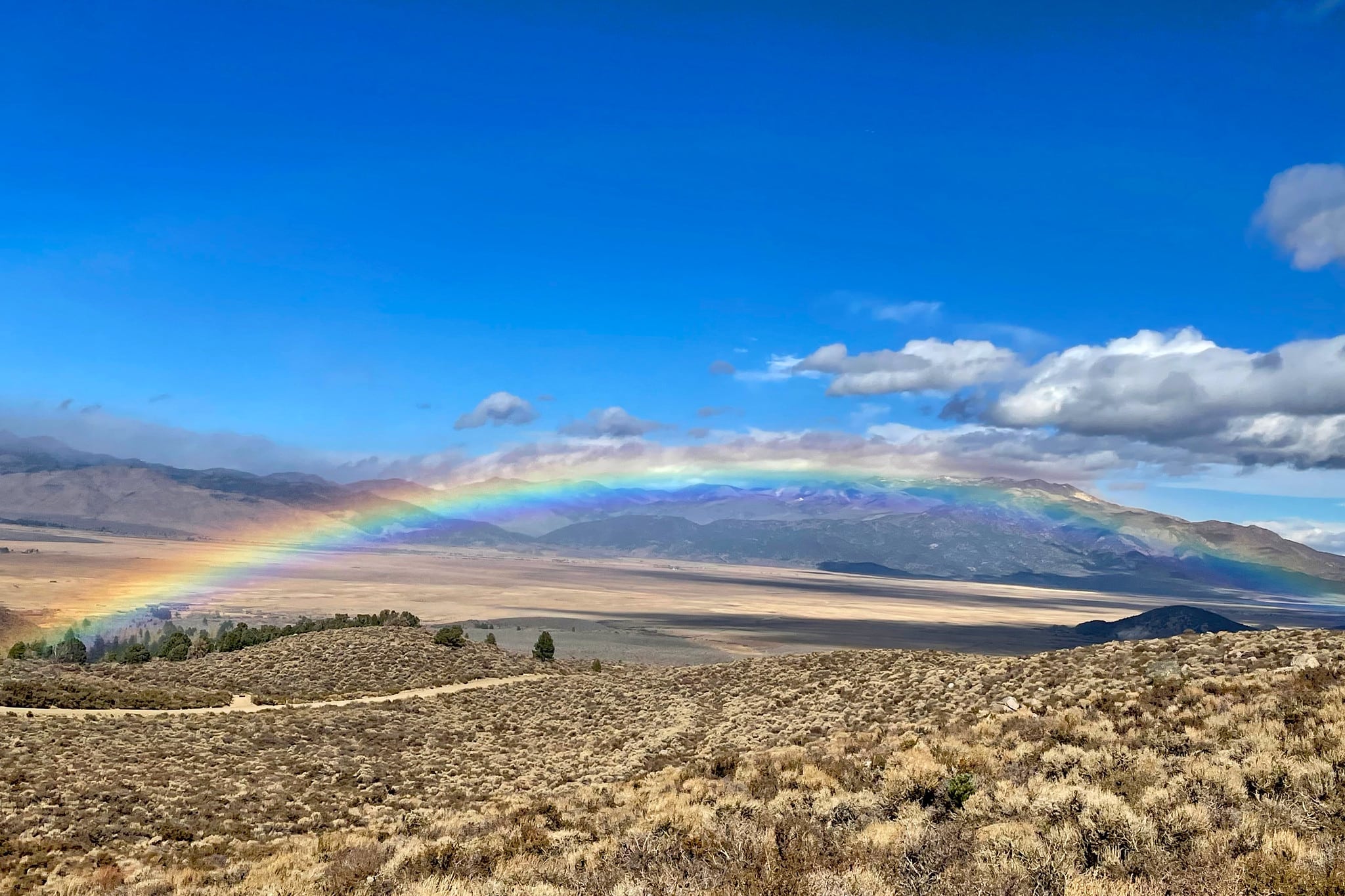Products You May Like
BLM land in the Bodie Hills region of California. BLM / CC BY 2.0
 Why you can trust us
Why you can trust us
Founded in 2005 as an Ohio-based environmental newspaper, EcoWatch is a digital platform dedicated to publishing quality, science-based content on environmental issues, causes, and solutions.
Currently, the Department of Interior’s (DOI) Bureau of Land Management (BLM) will auction leases for people or companies who want to use public lands for exploitative purposes like oil and gas drilling, mining or cattle ranching that disrupt ecosystems and contribute to the climate crisis.
Now, the DOI is proposing a new kind of leasing–conservation leases that would allow companies to offset environmentally harmful activities by paying to restore a degraded ecosystem or reestablish corridors for the migration of large game animals.
“As the nation continues to face unprecedented drought, increasing wildfires and the declining health of our landscapes, our public lands are under growing pressure. It is our responsibility to use the best tools available to restore wildlife habitat, plan for smart development, and conserve the most important places for the benefit of the generations to come,” Interior Secretary Deb Haaland said in a statement announcing the proposed policy Thursday. “As we welcome millions of visitors to hunt, fish and recreate on our public lands each year, now is the time to improve the health and management of special places.”
The conservation leasing is only one element of the proposed Public Lands Rule, which seeks to protect lands that have become increasingly vulnerable as the climate crisis worsens droughts, wildfires and extreme weather events. The proposal focuses on the BLM in particular, which manages 10 percent of U.S. lands, largely in the West, Reuters explained. The rule builds on Congress’s direction in the Federal Land Policy and Management Act (FLPMA) of 1976 that the Interior Secretary should “give priority to the protection” of BLM lands, Center for Western Priorities Deputy Director Aaron Weiss explained to The Hill. However, BLM’s role in protecting the lands it manages has never been laid out in a federal rule, Weiss said.
Other measures in the rule include
- Asking land managers to identify lands and waters in need of restoration.
- Ensuring the BLM is working with other land management agencies, like the U.S. Forest Service, to accurately assess the health of federal land.
- Using the FLPMA to mandate that BLM identify and designate Areas of Critical Environmental Concern (ACEC).
Conservation leasing is also a tool enabled by the FLPMA. It would allow a solar company, for example, to compensate for damaging wildlife with its installation by leasing a restoration area elsewhere, Reuters explained. Alternatively, corporations could offset greenhouse gas emissions by leasing and protecting forests. While carbon offsets in general have become increasingly controversial, the proposal itself is largely popular with environmental groups, who see it as an opportunity to further protect public lands in line with the Biden administration’s promise to protect 30 percent of U.S. land and water by 2030.
Learn About These Solar Options From EcoWatch
“For too long, our public lands, including some of the most jaw-dropping places, have been given up to mining, drilling and other development,” Environment America senior conservation program director Steve Blackledge said in a statement emailed to EcoWatch. “Whether it’s the Arctic, the Mojave Desert, New Mexico’s Greater Chaco Region or Georgia’s Okefenokee Swamp region, we need to choose preservation over the fleeting value of more fossil fuels or minerals. These lands make our country beautiful, and they’re essential to the wildlife we share it with.”
Once the proposal is published in the Federal Register, the public will have 75 days to comment.
“Our public lands provide so many benefits – clean water, wildlife habitat, food, energy and lifetime memories, to name just a few– and it’s our job to ensure the same for future generations,” Bureau of Land Management Director Tracy Stone-Manning said in the agency announcement. “As pressure on our public lands continues to grow, the proposed Public Lands Rule provides a path for the BLM to better focus on the health of the landscape, ensuring that our decisions leave our public lands as good or better off than we found them. We look forward to feedback from the public on how this proposal will help us best uphold the BLM’s important mission.”
Weiss said that there is somewhat of a deadline for flinalizing the rule, since, if either the Presidency or Senate flips parties in 2024, Congress may choose to overturn it with a simple majority using the Congressional Review Act. This act gives Congress 60 days of session from a federal rule’s submission to reject the rule and is most often used after a changeover in parties.
“It is very important that the Biden administration get this rule finalized within the next 12 to 13 months on the far end in order to protect it from potentially getting repealed under the [CRA] if there’s a change in administration,” Weiss told The Hill. “They have a chance to get it done, but they’re going to have to move fast.”
Subscribe to get exclusive updates in our daily newsletter!
By signing up, you agree to the Terms of Use and Privacy Policy & to receive electronic communications from EcoWatch Media Group, which may include marketing promotions, advertisements and sponsored content.
